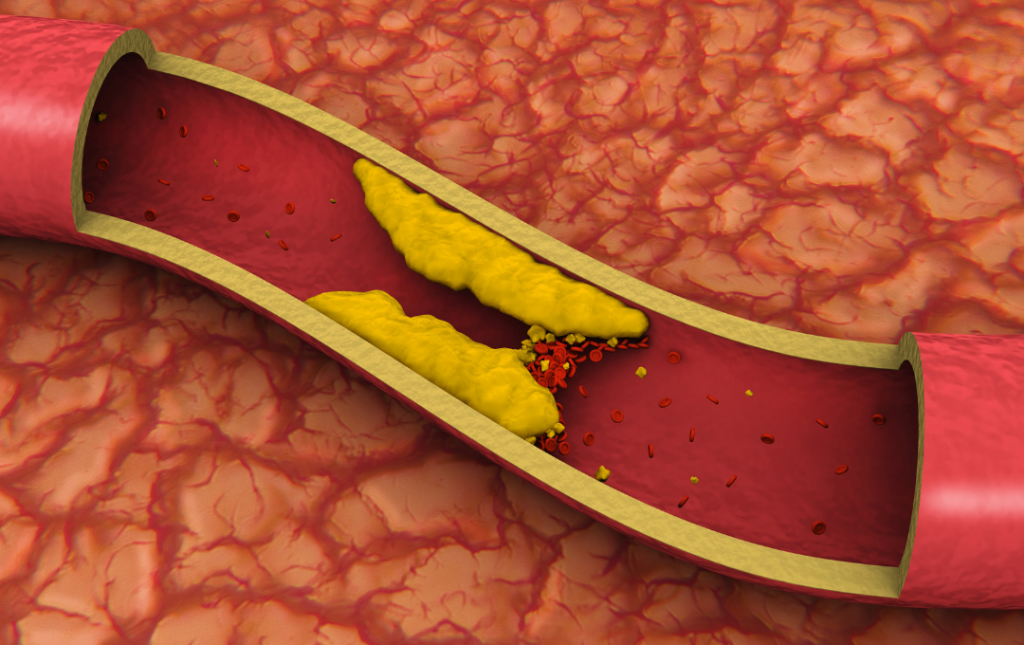Imagine the room is spinning, and you feel totally unbalanced, like the world is tipping over. If you’ve ever had vertigo, you know it’s more than just feeling a little dizzy. It’s a strong feeling that you or everything around you is moving or spinning.
Vertigo can result from several external factors acting together. In certain cases, there might be a link between this feeling of dizziness, and a poor circulation issue called peripheral artery disease (PAD) usually known for causing leg pain.
PAD occurs when the blood vessels in your legs become narrow, restricting blood flow. So, are these two seemingly different problems connected? Can PAD cause balance issues or make you feel dizzy?
While vertigo isn’t a direct symptom of PAD, it’s helpful to understand how our blood circulation works and how in certain situations, PAD might play a role in or be linked to vertigo.
Understanding Vertigo: More Than Just Dizziness
Vertigo is defined as a sensation of spinning or whirling, either of oneself or your surroundings. Common causes of vertigo often include inner ear problems, certain medications, anxiety, dehydration, and low blood sugar.
Since vertigo is a symptom, not a disease itself, it requires proper diagnosis to differentiate from other conditions and pinpoint the underlying cause. To understand its potential connection to PAD or any other conditions, it’s helpful to know the different types of vertigo:
- Peripheral Vertigo: The most common type of vertigo that originates from issues within the inner ear and plays a critical role in balance. Causes include:
- Benign Paroxysmal Positional Vertigo (BPPV): Brief, intense vertigo triggered by specific sudden head movements, caused by displaced crystals (small calcium carbonate particles) in the inner ear.
- Meniere’s Disease: A disorder of the inner ear that can cause vertigo, ringing in the ears (tinnitus), hearing loss, and a feeling of fullness in the ear.
- Labyrinthitis/Vestibular Neuritis: Inflammation of the inner ear or the vestibular nerve, often caused by a viral infection, leading to sudden, severe vertigo.
- Central Vertigo: This type arises from problems in the brain, particularly in the cerebellum or brainstem, which are vital for coordinating balance.
Central vertigo also known as vascular vertigo is caused by a disruption of blood flow to the brain, often due to a stroke or transient ischemic attack (TIA), sometimes called a “mini-stroke.” Essentially, vascular vertigo is a type of vertigo with a specific underlying cause brought about by vascular issues. Other brain issues like tumors, migraines, or multiple sclerosis can also contribute to central vertigo.
Can A Clogged Artery Cause Vertigo?
Vertigo is usually a symptom of an issue with the vestibular system , which is responsible for balance. When a clogged artery restricts blood flow to the parts of the brain or inner ear that control balance, it can lead to vertigo. One such condition is vertebrobasilar insufficiency (VBI) whereby clogged arteries cause vertigo.
Peripheral Artery Disease (PAD) Symptoms: Beyond Leg Pain
As we mentioned, Peripheral Artery Disease (PAD) occurs when atherosclerosis—the buildup of plaque—narrows the arteries supplying blood to the limbs, most commonly the legs. This narrowing restricts blood flow, leading to various symptoms.
While the primary symptom of PAD is often intermittent claudication (leg pain, cramping, or tiredness during activity that is relieved by rest), PAD can manifest in other ways:
- Numbness or weakness in the legs.
- Coldness in the lower leg or foot, especially when compared to the other side.
- Sores on the toes, feet, or legs that don’t heal.
- Changes in skin color or hair loss on the legs.
- Weak or absent pulses in the legs or feet.
Several factors increase your risk of developing PAD, including age, smoking, diabetes, high blood pressure, high cholesterol, and obesity. Understanding PAD’s seriousness is key: it not only impacts your limbs but also significantly increases your risk of heart attack, stroke, and even amputation if left untreated.
Can Vertigo Be A Symptom of PAD?
It’s important to state upfront: vertigo is not a direct or common symptom of PAD in the legs. PAD primarily affects blood flow to the limbs. However, there are indirect connections and overlapping risk factors that can link the two conditions:
- Cerebral Ischemia (TIA/Stroke): This is the most significant link. Atherosclerosis, the underlying disease that causes PAD, is systemic. This means if arteries in your legs are narrowed, it’s highly likely that arteries elsewhere in your body—including those leading to your brain (carotid arteries and vertebral arteries)—are also affected. If blood flow to the brain’s balance centers (like the cerebellum, brainstem, or inner ear) is compromised due to a Transient Ischemic Attack (TIA) or a stroke, vertigo can be a prominent and serious symptom. Patients with PAD are at a significantly higher risk for TIA/stroke due to this widespread arterial disease.
- Systemic Atherosclerosis: PAD is a clear indication of widespread vascular disease. If arteries in your legs are narrowed, it strongly suggests that arteries elsewhere in your body—including those supplying the brain and inner ear—are also narrowed. This broader arterial narrowing can contribute to reduced blood flow to areas crucial for balance.
- Medications: Some medications prescribed to manage PAD or its associated conditions (like high blood pressure or high cholesterol) can sometimes cause side effects such as dizziness or lightheadedness. While not true vertigo, these sensations could be mistaken for it or contribute to a feeling of imbalance.
- General Cardiovascular Health: Poor overall cardiovascular health, often present in individuals with PAD, can contribute to a variety of symptoms, including those that might manifest as dizziness or balance problems.
When to Seek Medical Attention
Given the potential severity and seriousness of vertigo, especially when linked to vascular issues, it’s important to know when to seek medical help.
There are certain red flags that may crop up indicating the inception of vascular issues especially peripheral artery disease such as the sudden onset or severe vertigo. Vertigo which is accompanied by new neurological symptoms such as weakness, numbness, vision changes, or difficulty with speech might also signal towards the development of PAD. Other instances to consult a vascular specialist for vertigo and PAD include vertigo after a head injury and vertigo that is persistent or worsening.
Don’t ignore the signals your body is trying to send you. Be aware of your symptoms and proactively seek medical advice for any unexplained dizziness or balance problems. If you’ve been diagnosed with PAD, or if your symptoms suggest vascular issues, USA Vascular Centers is here to help.
Find PAD Relief at USA Vascular Centers
Both vertigo and PAD require professional diagnosis and management. If you’re experiencing unexplained vertigo, and balance issues especially if you have risk factors for PAD or other vascular disease, it’s essential to seek medical advice. A comprehensive evaluation may include:
- A physical and neurological exam.
- Blood tests.
- Imaging tests like MRI or CT scans for the brain, and ultrasound or angiography for arteries.
- Vestibular testing to assess inner ear function.
- For PAD, a non-invasive ankle-brachial index (ABI) test is a common diagnostic tool.
USA Vascular Centers specialize in diagnosing and treating peripheral artery disease, offering advanced, minimally invasive treatments to improve blood flow and your overall quality of life.
Managing your vascular health is key for overall well-being and can help lower the risks of serious conditions like stroke, which can directly cause debilitating vertigo. We specialize in custom treatment plans and accept most insurances, including Medicare and Medicaid, at our nationwide locations.
Schedule your appointment online or call 888.773.2193 to speak to a member of our team.





